Growing cucumbers upward keeps fruit clean, saves space, and turns ordinary beds into sculptural focal points. Whether you garden on a balcony or acreage, the right trellis can boost yields and aesthetics at once. Explore 25 cucumber trellis ideas — each a complete concept that specifies materials, layout, and maintenance tricks — so you can pick the style that fits your space, budget, and taste.
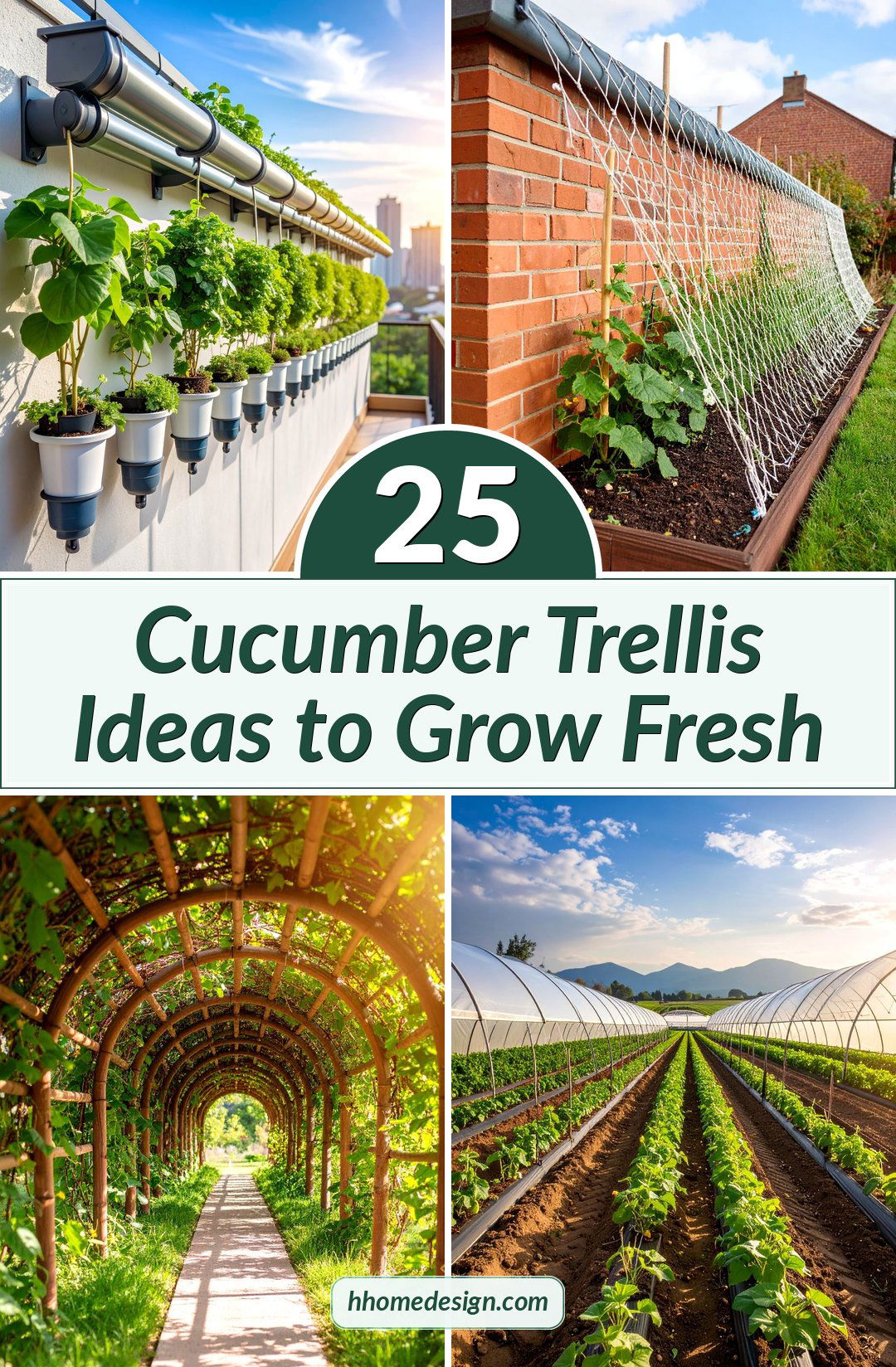
1. Classic A-Frame Cucumber Trellis Ladder

A practical starting point, the classic A-frame cucumber trellis uses two wooden frames hinged at the top to form a self-supporting ladder. Secure 2×2 spruce uprights with galvanized hinges, then stretch sturdy garden mesh or livestock wire across both faces. Position the legs straddling the planting row so vines climb from either side, maximizing sun exposure and airflow. The angled sides make harvesting easy — simply reach through the mesh to pluck hanging fruit. When the season ends, fold the structure flat for compact storage in a shed. For longevity, coat wood with food-safe exterior sealant to resist moisture and soil contact.
2. Vertical Wire Panel Cucumber Trellis Wall
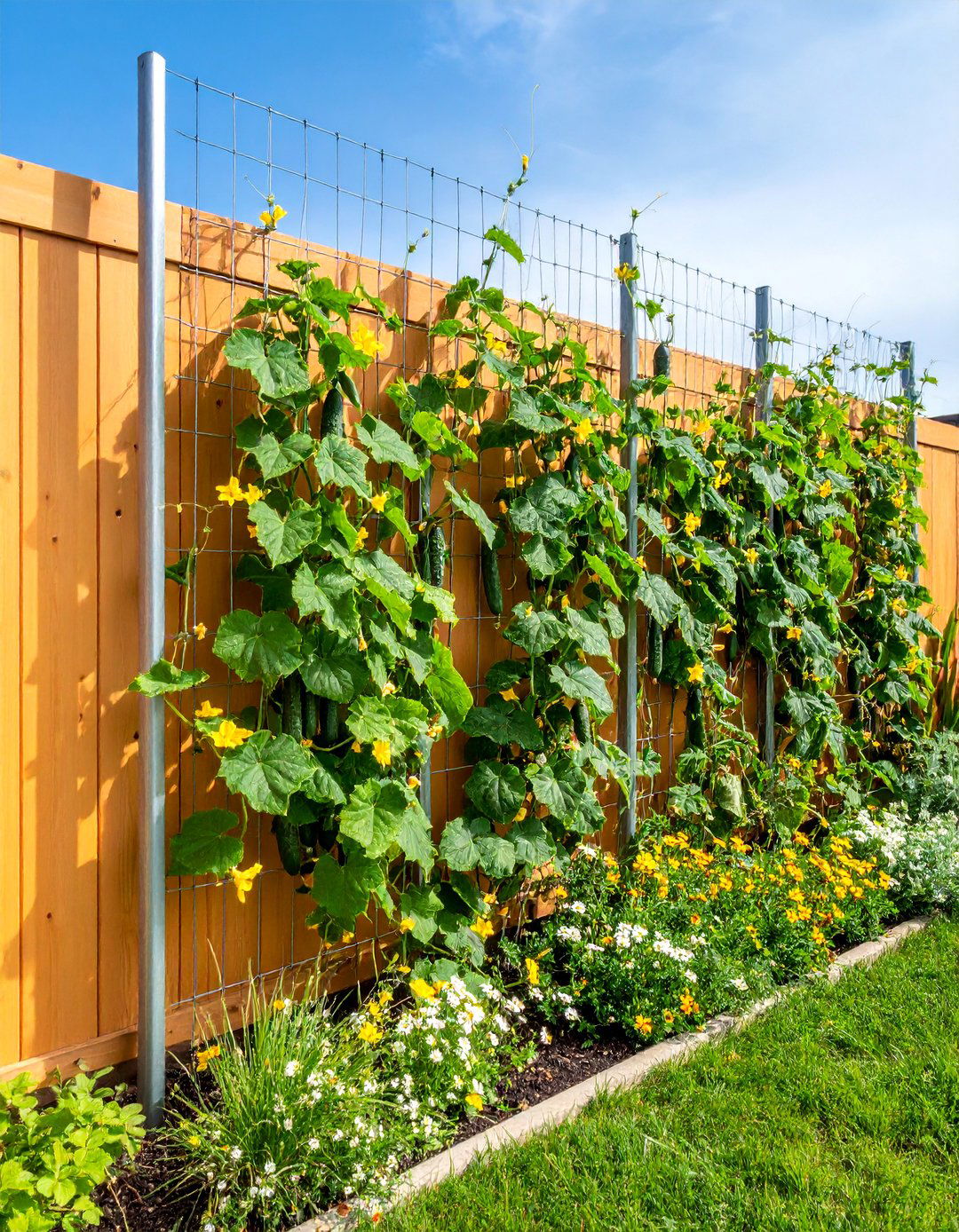
For small gardens yearning for height, a vertical wire panel cucumber trellis wall delivers sleek efficiency. Drive metal T-posts along the bed’s back edge, then attach a heavy-gauge cattle or hog panel with zip ties. The rigid grid supports multiple vines while occupying barely six inches of footprint. Mulched soil beneath stays cooler and cleaner because fruit dangles off the ground. Place the wall on the north side to prevent shading shorter crops. End-of-season cleanup is effortless — clip vines at the base and roll the panel aside. This sturdy, long-lasting option withstands strong winds and doubles as a snow fence in winter.
3. Arched Bamboo Cucumber Trellis Tunnel
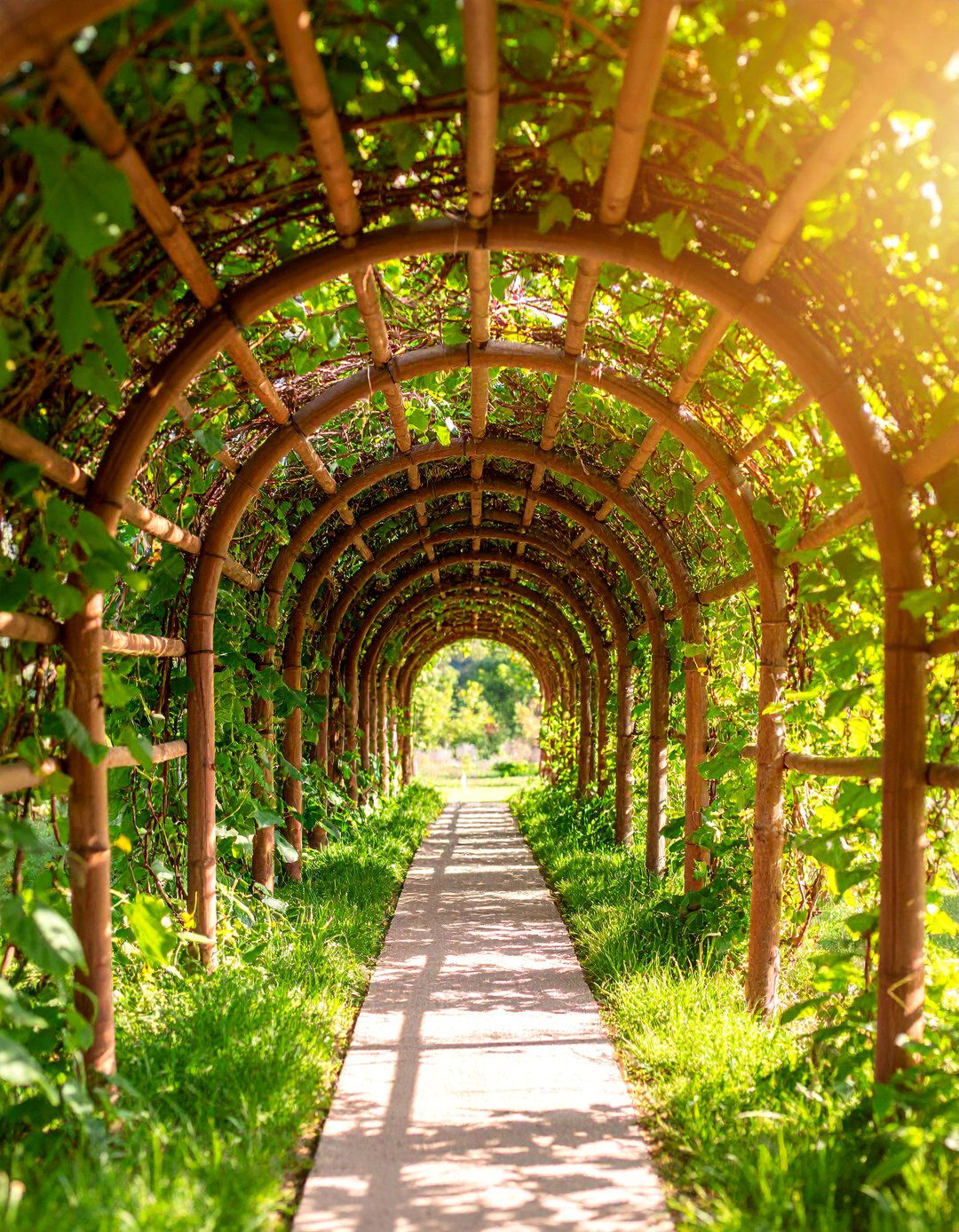
Imagine strolling beneath a leafy tunnel while cucumbers dangle overhead — an arched bamboo cucumber trellis creates that enchanting walkway. Sink paired rebar stakes opposite each other in two parallel rows, then bend long bamboo poles to form graceful hoops, fastening tops with zip ties. Weave additional horizontal bamboo pieces across hoops for lattice support. Plant cucumbers along both sides; vines climb and meet at the apex, casting cool shade on summer afternoons. The tunnel’s center becomes a charming path for children and pollinators alike. After harvest, compost the biodegradable bamboo or repurpose it as bean stakes the following spring.
4. Folding Wooden Cucumber Trellis Gate
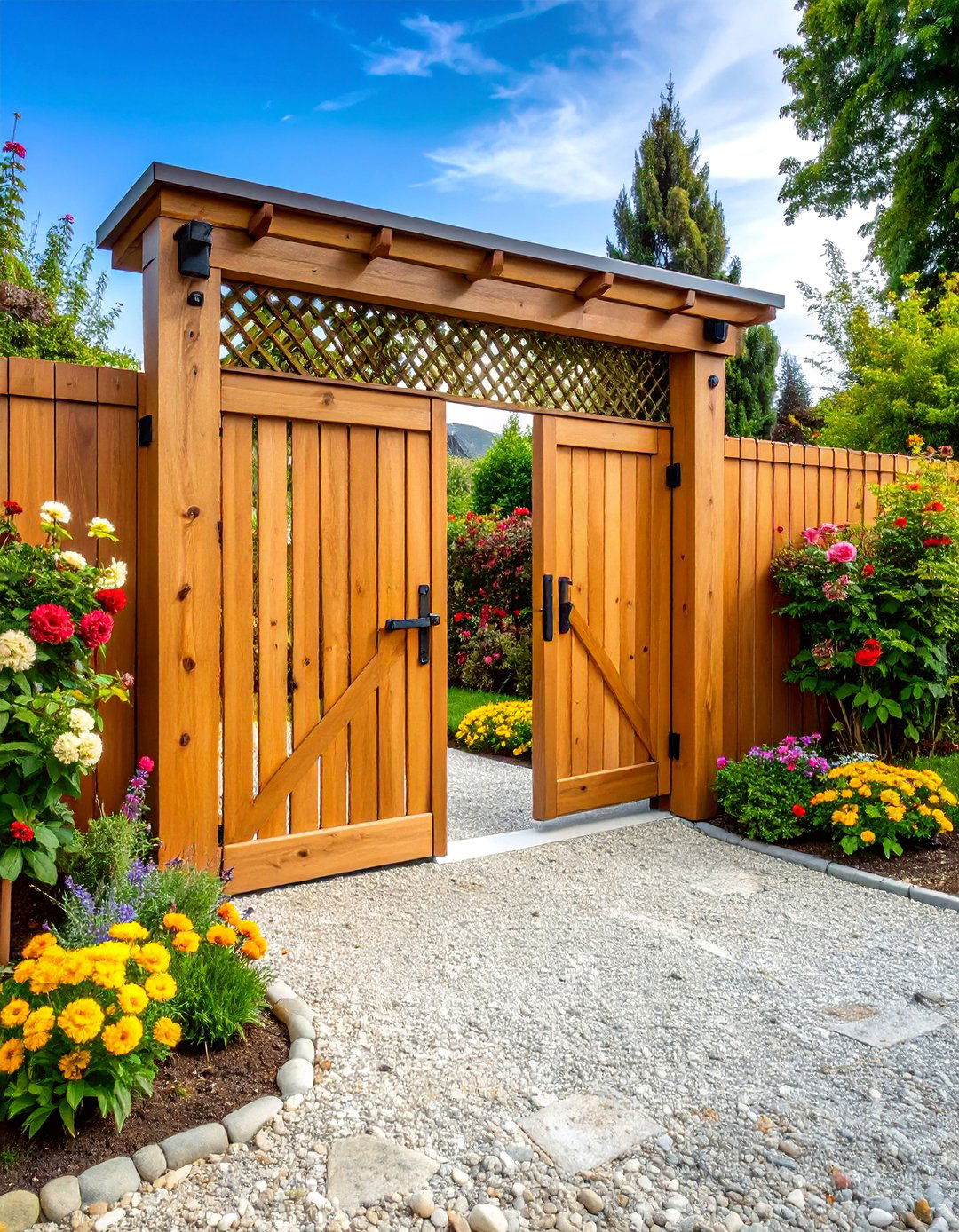
Unlike fixed frames, a folding wooden cucumber trellis gate acts as both support and movable garden divider. Construct two equal rectangular panels using cedar slats and screw robust butt hinges along one vertical edge. Staple plastic-coated garden wire across each panel, leaving square openings for easy tendril grabbing. Situate the gate at a bed’s entrance; during maintenance, swing panels outward for full access. The cedar’s natural oils resist rot, while the gate design adds a rustic “farmhouse” accent. In winter, collapse the panels flat, hang them on hooks in the garage, and they’ll be ready to greet seedlings come spring.
5. Cattle Panel Cucumber Trellis Archway
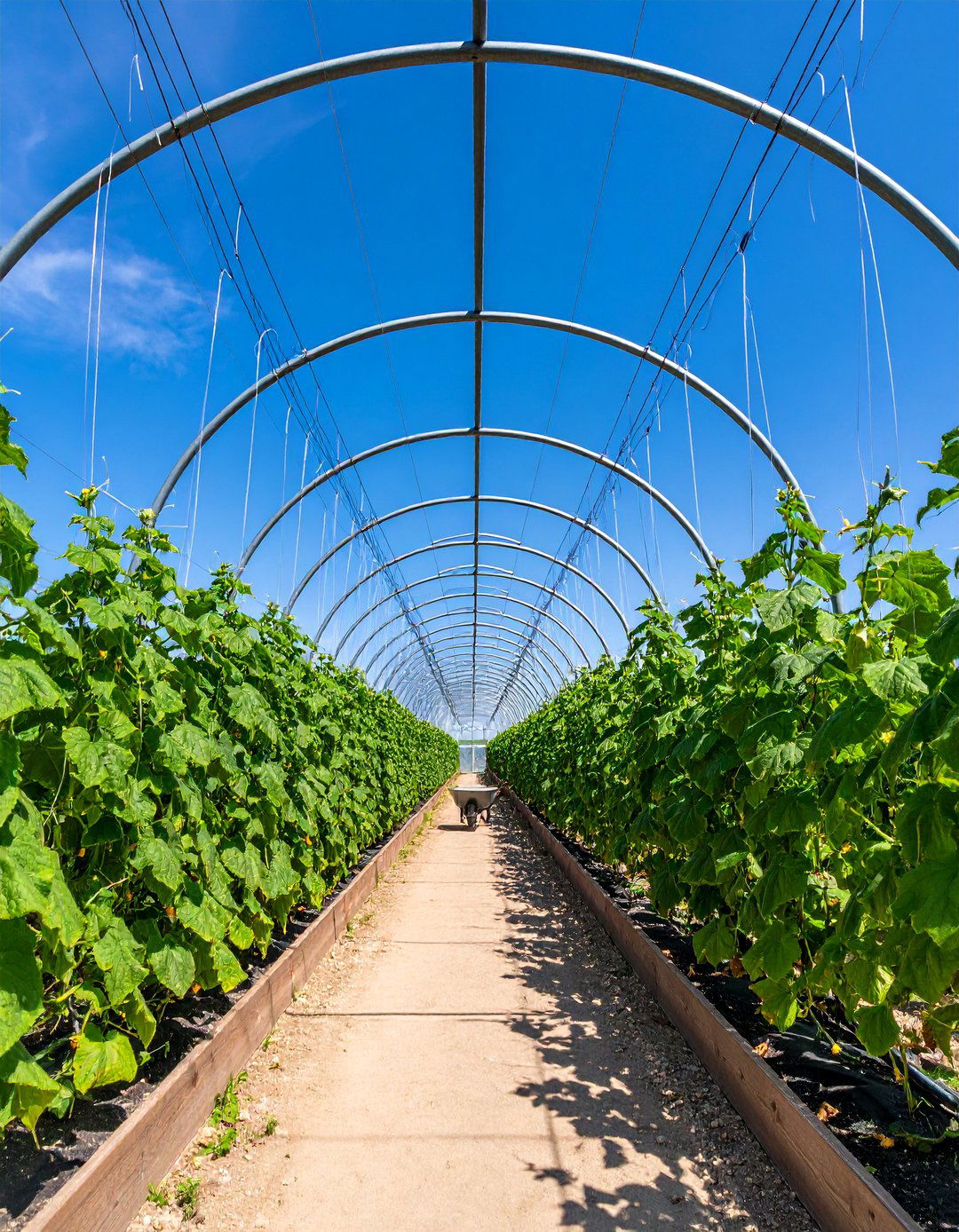
For indestructible strength, a cattle panel cucumber trellis archway harnesses 16-foot livestock panels bent into a tall arc. Anchor each end inside sturdy, two-foot-deep trench posts or snugly within raised-bed walls. As cucumbers scramble upward, fruit hang down at eye level for effortless picking. The arch’s generous clearance lets gardeners wheel a barrow beneath or train beans on the backside for a double-crop effect. Hot-dip – galvanized steel shrugs off rust for a decade or more, and the grid spacing supports heavy slicers without additional ties. Leave the arch in place year-round as a sculptural element framing seasonal plantings.
6. Teepee-Style Cucumber Trellis Tower
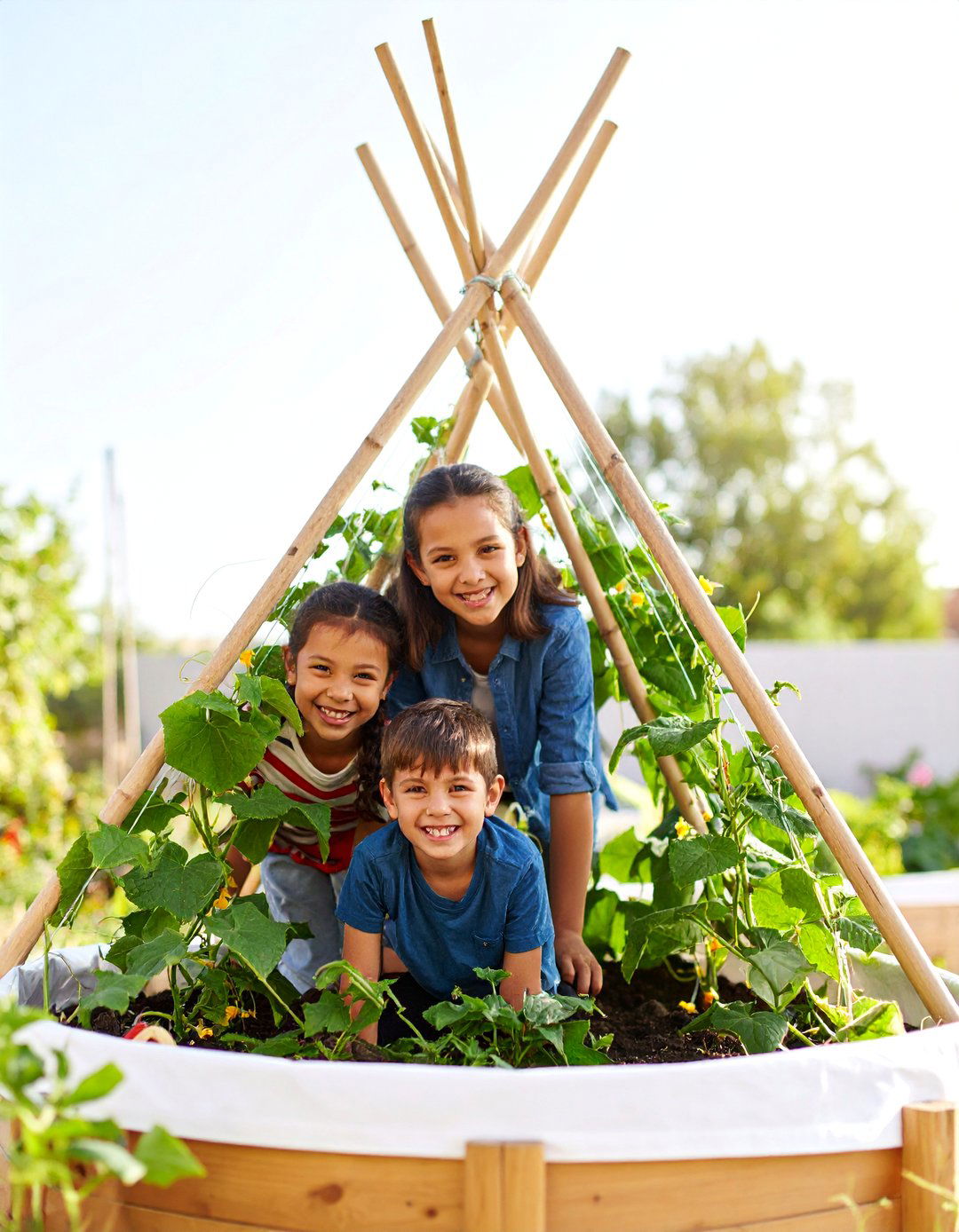
For a playful, kid-friendly structure, the teepee-style cucumber trellis tower uses six stout poles lashed together at the top. Drive bamboo or cedar poles equally spaced in a ring, slanting inward so their tips meet overhead. Wrap natural sisal twine spirally from base to apex, creating a web for climbing tendrils. Plant cucumbers around the perimeter and watch them cloak the framework, turning the interior into a secret green hideout. The teepee fits nicely within circular beds or large containers and resists wind by distributing forces evenly. After frost, unlash the biodegradable twine and reuse the poles elsewhere.
7. Pergola-Inspired Cucumber Trellis Pathway

Bringing architectural flair, a pergola-inspired cucumber trellis pathway converts a simple garden walk into a shaded arbor. Set 4×4 pressure-treated posts along a central path, then attach crossbeams overhead. Stretch galvanized wire or garden netting between beams to form a ceiling grid. Train cucumbers up twine lines from beds flanking the walkway; vines quickly intermingle overhead, creating a living roof that cools visitors below. The sturdy posts also support string lights or hanging herb baskets, making the pergola multifunctional after harvest. When properly sealed, the structure remains permanent, allowing crop rotation — try gourds or peas in alternate years.
8. PVC Pipe Cucumber Trellis Grid

Durability meets lightweight convenience in the PVC pipe cucumber trellis grid. Cut 1-inch schedule-40 PVC into vertical and horizontal lengths, assembling them with T and elbow connectors into a rectangular lattice sized to your bed. Drill small holes every foot through the pipes, then thread nylon garden twine crisscross to create a net. Insert rebar stakes into soil and sleeve the PVC frame over them for stability. White pipe reflects sunlight, reducing heat stress on vines, and won’t rot or rust. Disassembly is simple: pull off connectors, stack pipes, and store pieces inside one another to save space.
9. Recycled Pallet Cucumber Trellis Fence

Eco-minded gardeners can transform discarded pallets into a recycled pallet cucumber trellis fence that screens unsightly areas. Remove alternating slats to widen gaps, sand rough edges, and stand pallets vertically, securing them to metal stakes. Plant cucumbers at the base; tendrils weave through openings, quickly cloaking the fence in foliage. Add a hinged section to act as a rustic gate if desired. Pallet wood benefits from a linseed oil finish, prolonging life without harmful chemicals. Besides supporting vines, the fence serves as a backdrop for hanging planters filled with marigolds that repel cucumber beetles naturally.
10. Metal Rebar Cucumber Trellis Obelisk
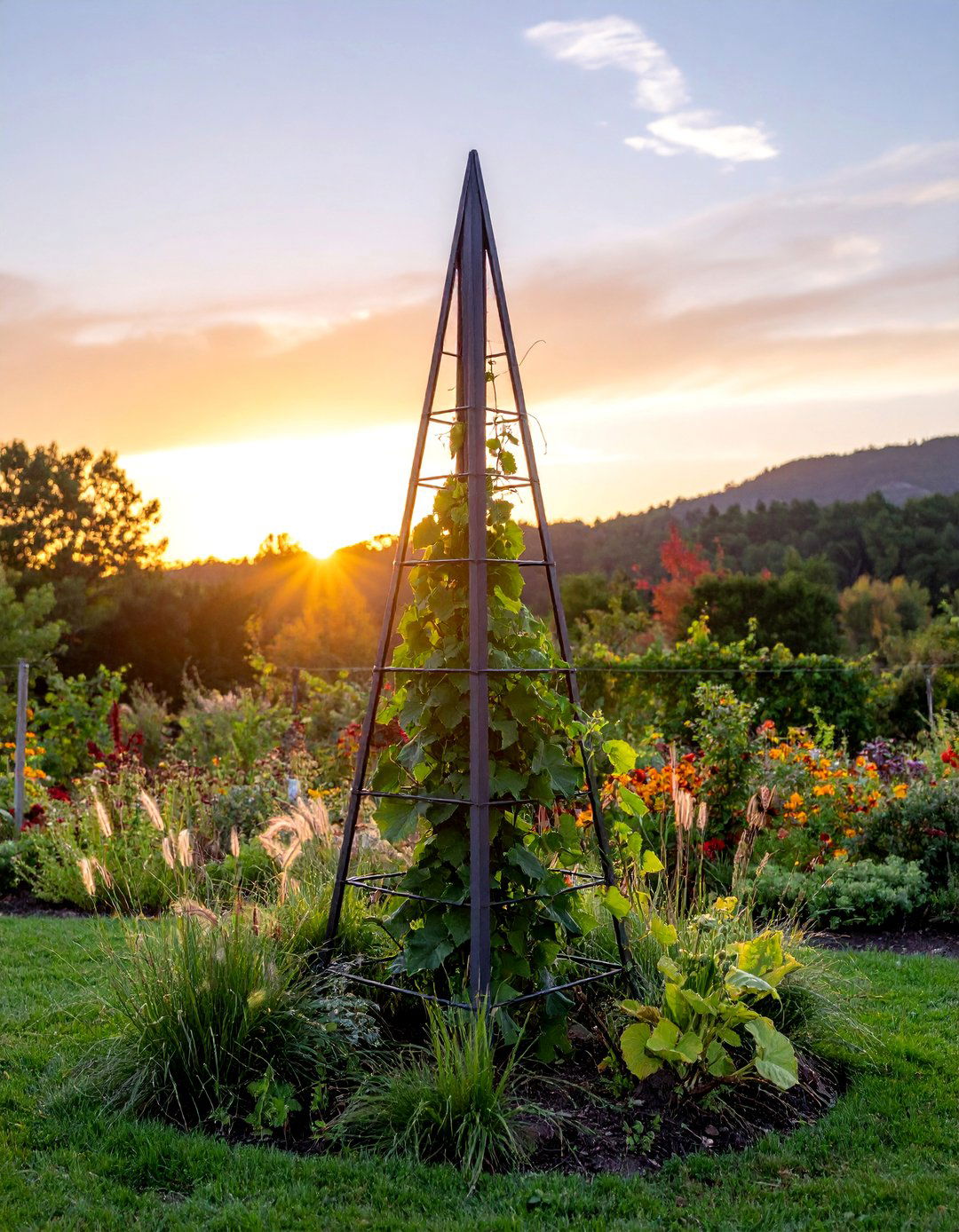
Sleek yet sturdy, a metal rebar cucumber trellis obelisk introduces industrial chic to vegetable beds. Weld or clamp four rebar rods at the top to form a tapered pyramid, then wrap horizontal rings of thinner rebar every foot down the frame. Pound the bottom legs a foot into soil for stability. Dark metal warms earlier in spring, encouraging faster growth, while the open silhouette allows breezes to dry leaves, reducing powdery mildew. Paint the obelisk with matte black rust-inhibiting spray for longevity. Off-season, string fairy lights around the frame to create a striking winter garden sculpture.
11. String-Line Cucumber Trellis Clothesline

When simplicity rules, a string-line cucumber trellis clothesline maximizes length with minimal hardware. Stretch galvanized wire or nylon rope between two tall posts like a laundry line. From the top wire, suspend individual biodegradable jute strings down to each plant, anchoring ends with garden staples. Train a single vine per string, pruning side shoots to maintain airflow and straight growth. This high-density method suits market growers aiming for uniform fruit. Replace worn strings annually while keeping the main wire intact. For added convenience, attach an overhead misting hose along the wire to provide gentle, even irrigation in hot weather.
12. Raised-Bed Integrated Cucumber Trellis Frame

A raised-bed integrated cucumber trellis frame saves space by becoming part of the bed’s structure. Build a cedar or composite raised bed, then extend the corner posts an extra three feet above the rim. Screw 1×2 crosspieces between posts at multiple heights and staple nylon netting across the frame. Cucumbers planted inside the bed climb outward, shading soil and suppressing weeds. Because the trellis is rigidly connected to the bed, no additional anchors are necessary. In autumn, clip the netting free and roll it up, leaving the wooden skeleton to host snow peas or sweet peas next spring.
13. Hanging Gutter Cucumber Trellis System

Looking for vertical hydroponic flair? A hanging gutter cucumber trellis system suspends lightweight rain gutters filled with potting mix from a wall or pergola. Drill drainage holes, add drip emitters, and plant compact cucumber cultivars. Above each gutter, mount a parallel wire for vines to ascend, keeping fruit off the narrow growing channel. Nutrient solution recirculates through tubing to minimize water use. This setup thrives on balconies or beside garages where soil access is limited. At season’s end, detach gutters, rinse them clean, and stack neatly until next planting — ideal for urban gardeners craving high yields in tight quarters.
14. Porch Railing Cucumber Trellis Screen

Porch dwellers can blend beauty and practicality with a porch railing cucumber trellis screen. Fasten vertical cedar battens to the outer face of an existing railing, leaving two-inch spacing. Stretch marine-grade rope horizontally every foot to create a grid that echoes nautical design. Plant cucumbers in long planters along the porch edge; vines climb upward, forming a leafy privacy screen that cools seating areas. Morning coffee becomes more enjoyable as you reach through foliage for crisp cucumbers. In cold climates, unhook ropes for storage, leaving the streamlined battens in place to support holiday garlands later in the year.
15. Hoop House Cucumber Trellis Combo

Combining season extension and vertical support, a hoop house cucumber trellis combo employs PVC hoops covered with clear polyethylene sheeting. Inside, hang plastic-coated wire mesh lengthwise along the center ridge, forming an interior wall. Plant cucumbers along both sides; as temperatures warm, roll up sidewalls for ventilation while vines continue upward. The enclosed environment speeds germination and guards against early pests. Once fruit sets, the mesh holds weight without sagging. When frost threatens again, drop the sides to harvest late into autumn. Remove and store film in winter, but leave hoops and mesh in place to host early lettuce.
16. Decorative Lattice Cucumber Trellis Privacy Wall
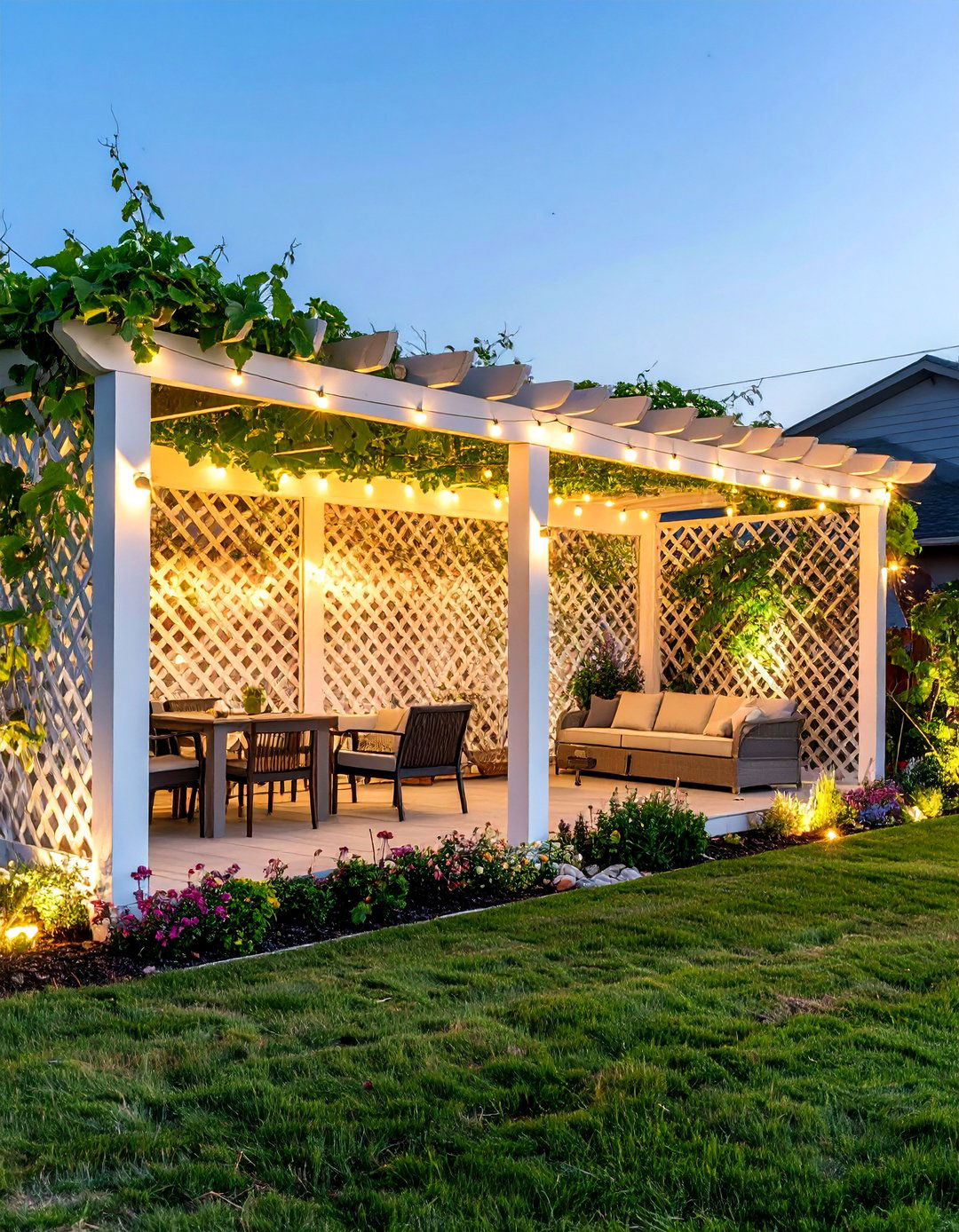
For elegance that complements patios, a decorative lattice cucumber trellis privacy wall utilizes pre-painted vinyl lattice panels framed in white PVC trim. Attach panels to 4×4 posts anchored in concrete footings, spacing them to span seating zones. Plant vining cucumbers in matching planter boxes; glossy leaves and dangling fruit soften the crisp lattice pattern while providing living privacy. Vinyl resists mildew and never needs repainting. After harvest, cut vines at soil level, leaving root systems to decay naturally and enrich soil. Come winter, string evergreen garlands through the lattice for year-round ornamental value.
17. Living Willow Cucumber Trellis Dome

Surprisingly whimsical, a living willow cucumber trellis dome merges art and cultivation. In early spring, insert fresh, flexible willow rods in a circle, bending and weaving tops together to create a self-rooting dome. Interlace additional rods horizontally for stability. As willow sprout leaves, cucumbers planted around the base climb the green skeleton, producing a lush grotto. Keep the willow’s roots moist and trim interior shoots to avoid crowding. Each year the structure thickens, becoming stronger and more shade-giving. This living architecture enthralls children and wildlife while eliminating the need for off-season storage.
18. Copper Pipe Cucumber Trellis Sculpture
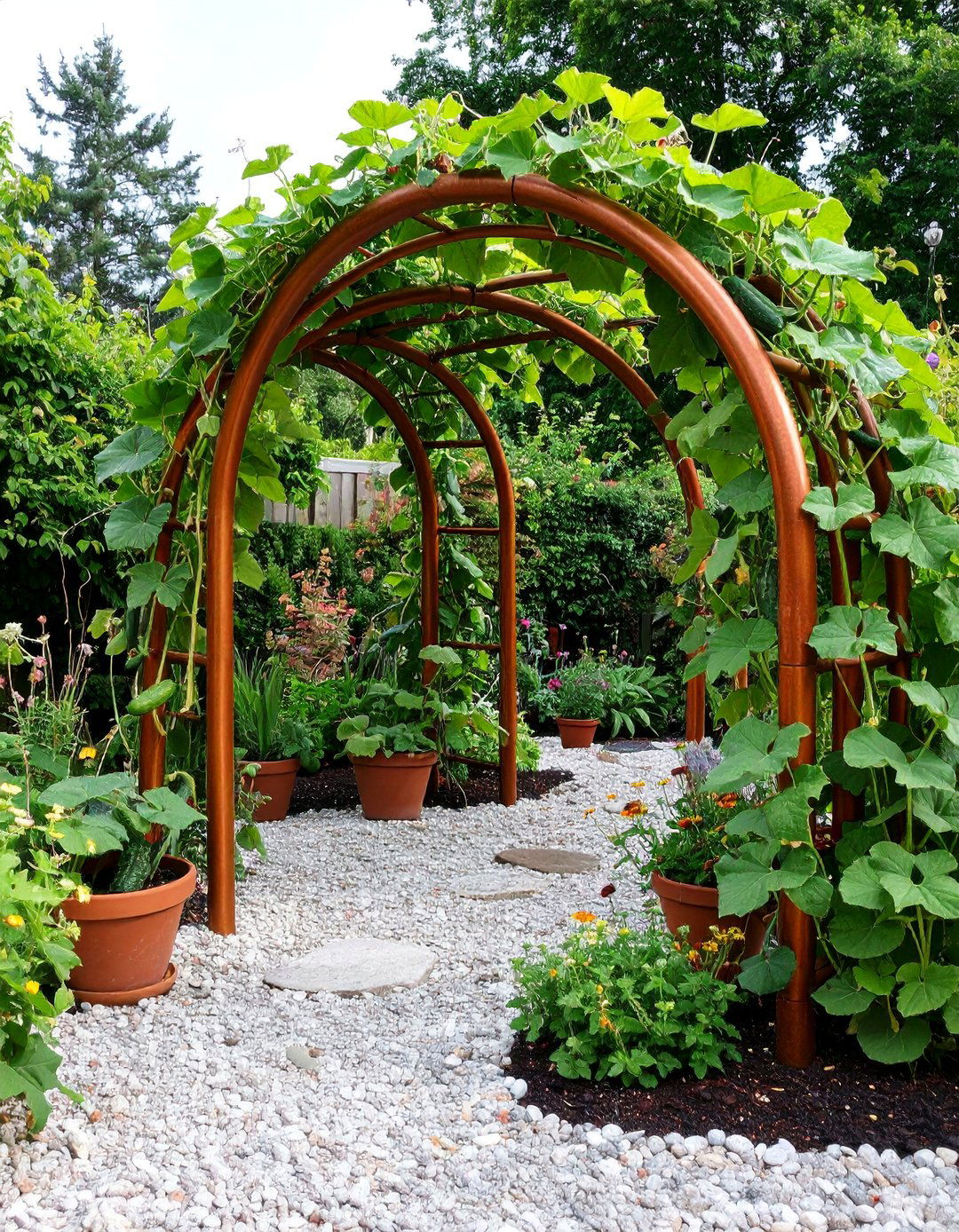
Gardeners with a taste for modern art can craft a copper pipe cucumber trellis sculpture using half-inch soft copper tubing bent into curving, intersecting arcs. Solder joints where pipes cross, then anchor the base in a concrete-filled decorative pot. Over time, copper develops a verdigris patina that contrasts dramatically with emerald leaves. Because copper naturally resists corrosion, the structure lasts decades. Train two or three vines spiraling upward; their tendrils wrap easily around the smooth tubing. In winter, relocate the pot indoors as a statement piece, proving functional trellises can double as year-round garden art.
19. Portable Folding Cucumber Trellis Crate
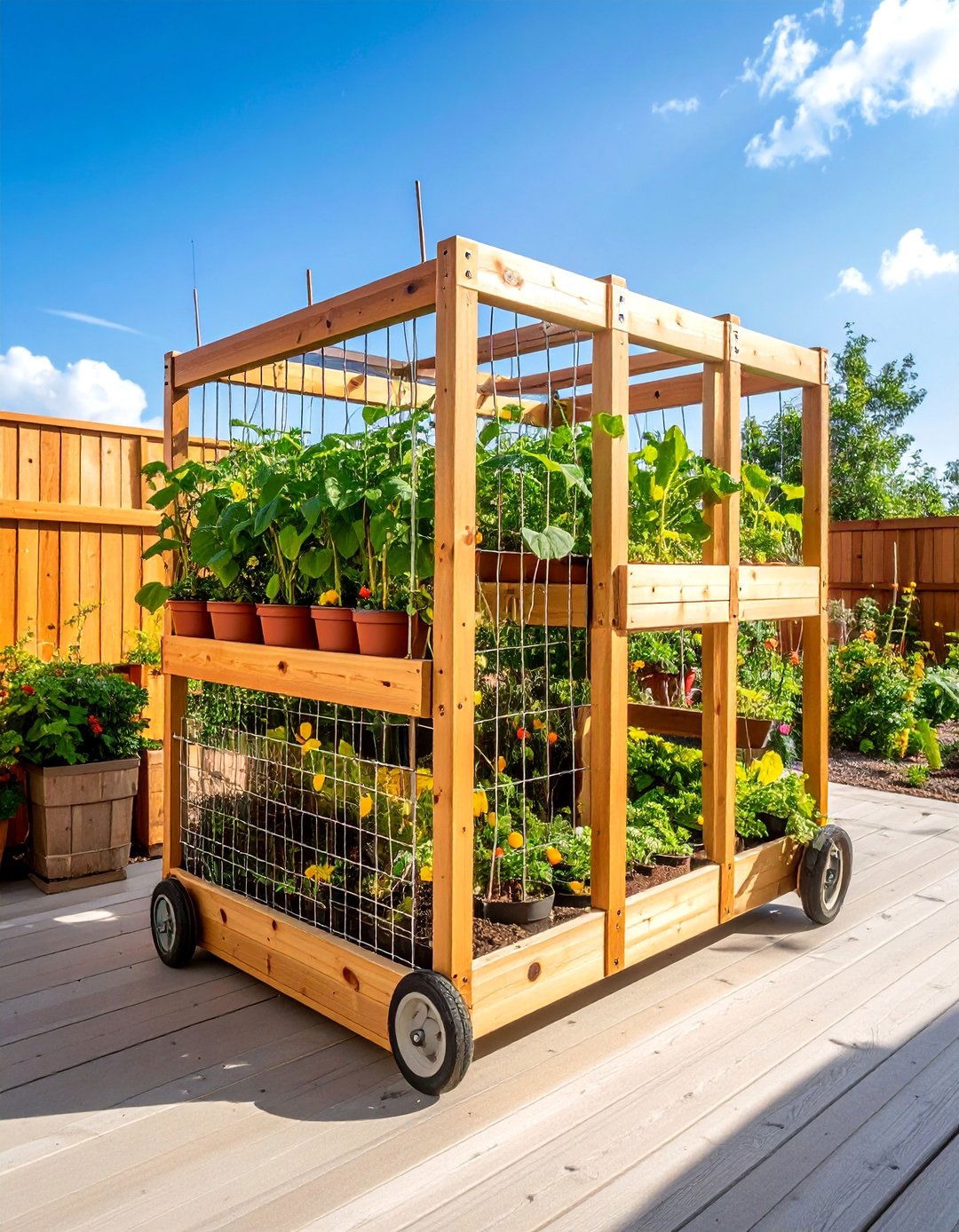
For small-plot crop rotation, a portable folding cucumber trellis crate offers unmatched flexibility. Build a rectangular crate from lightweight cedar slats, then hinge two slatted panels on opposite long sides so they fold upward into a V-shape. Staple heavy plastic netting to the panels’ inner faces. Transport the crate to any sunny spot, fill with compost-rich soil, and plant seeds along the central seam. As vines climb the lifted sides, fruit hangs into the crate’s void, staying protected from ground pests. Off-season, fold the panels flat against the base and carry the compact unit to storage.
20. Rope Net Cucumber Trellis Sail

Channel coastal vibes by rigging a rope net cucumber trellis sail against a south-facing wall. Secure marine-grade eye bolts high and low, then weave thick cotton rope into a diamond-pattern net reminiscent of ship rigging. The soft rope is gentle on delicate tendrils, while the sail’s diagonal angle maximizes sun exposure and sheds rain quickly. Plant cucumbers in a narrow trench along the lower edge; as vines ascend, they create a living mural visible from indoors. Season’s end cleanup is simple — untie knots, launder the rope, and store coiled like authentic nautical gear.
21. Greenhouse Ceiling Cucumber Trellis Grid

Commercial growers often exploit verticality with a greenhouse ceiling cucumber trellis grid, and home growers can emulate the method. Mount galvanized wire grids horizontally beneath rafters, then clip retractable vine hooks to each grid square. Guide vines up single strings from ground pots until they reach the ceiling, then “lower and lean” stems along the grid to keep fruit within reach. This technique maximizes cubic footage while maintaining airflow above other crops. Because cucumbers never touch soil, disease pressure plummets. At final harvest, cut strings and let foliage drop for fast removal before winter greenhouse sterilization.
22. Square Foot Cucumber Trellis Divider

In intensive beds, a square foot cucumber trellis divider separates crops while boosting yield. Construct a 4×4-foot wooden frame attached to bed edges, then staple nylon netting across. The grid doubles as both plant support and visual partition, letting you allocate precise square-foot sections on either side for lettuce, peppers, or herbs. Train two cucumber vines per vertical foot of net, pruning excess shoots to maintain light for neighbors. Rotating the divider annually helps maintain soil health. Netting rolls off easily at season’s end, leaving the frame ready to guide next year’s tomatoes or peas.
23. Repurposed Ladder Cucumber Trellis Lean-To

An old painter’s ladder becomes a repurposed ladder cucumber trellis lean-to with minimal modification. Position the ladder against a sturdy fence at a 60-degree angle, securing top rungs with brackets. Stretch chicken wire over the steps to create continuous footholds for vines. Grow cucumbers in containers placed at the ladder’s base; dangling fruit hangs through rungs for effortless picking. Paint the ladder bright mint or classic white to add cottage charm. Because the ladder remains movable, you can shift it to follow sun patterns or renovate fences without dismantling the trellis.
24. Urban Balcony Cucumber Trellis Rack

Balcony gardeners need vertical solutions, and an urban balcony cucumber trellis rack fits the bill. Assemble a freestanding metal shelving unit rated for outdoor use, then replace solid shelves with coated wire mesh. Plant cucumbers in rectangular self-watering tubs on the balcony floor; thread vines up to each successive “shelf, ” clipping them to mesh for support. The multilevel rack leaves floor space free for seating and herbs while forming a leafy privacy screen from neighbors. During storms, wheel the unit inward on locking casters to protect fragile vines. Stainless steel construction resists rust from constant windblown moisture.
25. Solar Panel Shade Cucumber Trellis Canopy

Harness technology by merging energy generation with gardening in a solar panel shade cucumber trellis canopy. Mount two small photovoltaic panels atop a tilted aluminum frame spanning the bed. Beneath, fasten stainless wire grids for cucumbers to climb. The panels cast filtered shade, moderating midsummer heat that can cause bitter fruit, while powering irrigation timers or garden lights. Run panel wiring discreetly along frame legs into a battery box at ground level. The canopy’s tilt directs rainwater to drip edges, naturally watering the planting row. Future add-ons could include temperature sensors linked to automated vent fans.
Conclusion:
Thoughtful trellis designs turn cucumbers into vertical art, freeing soil, boosting yields, and adding character to any outdoor space. Choose the concept that fits your climate, materials, and aesthetic, and savor crisp harvests delivered at eye level.



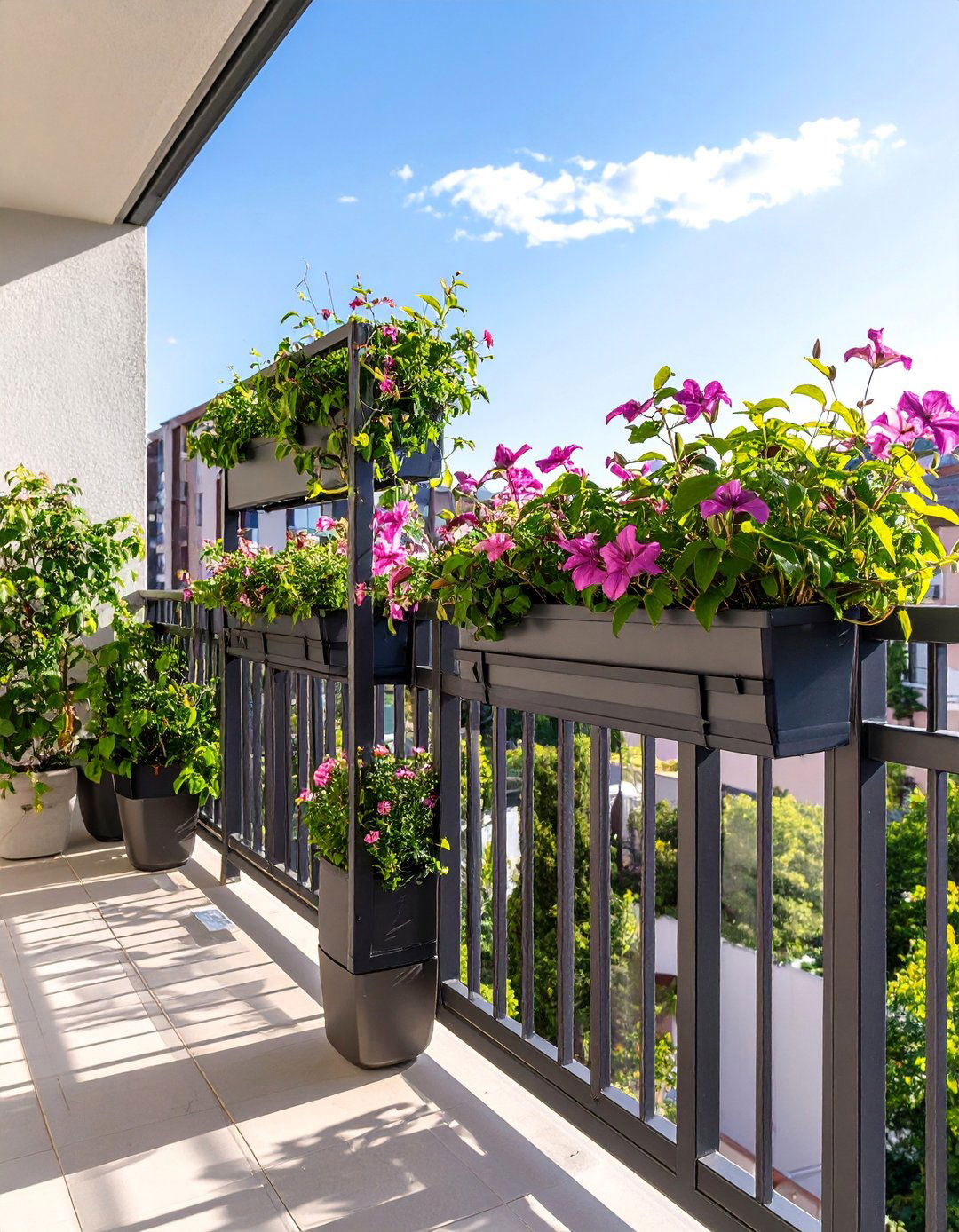
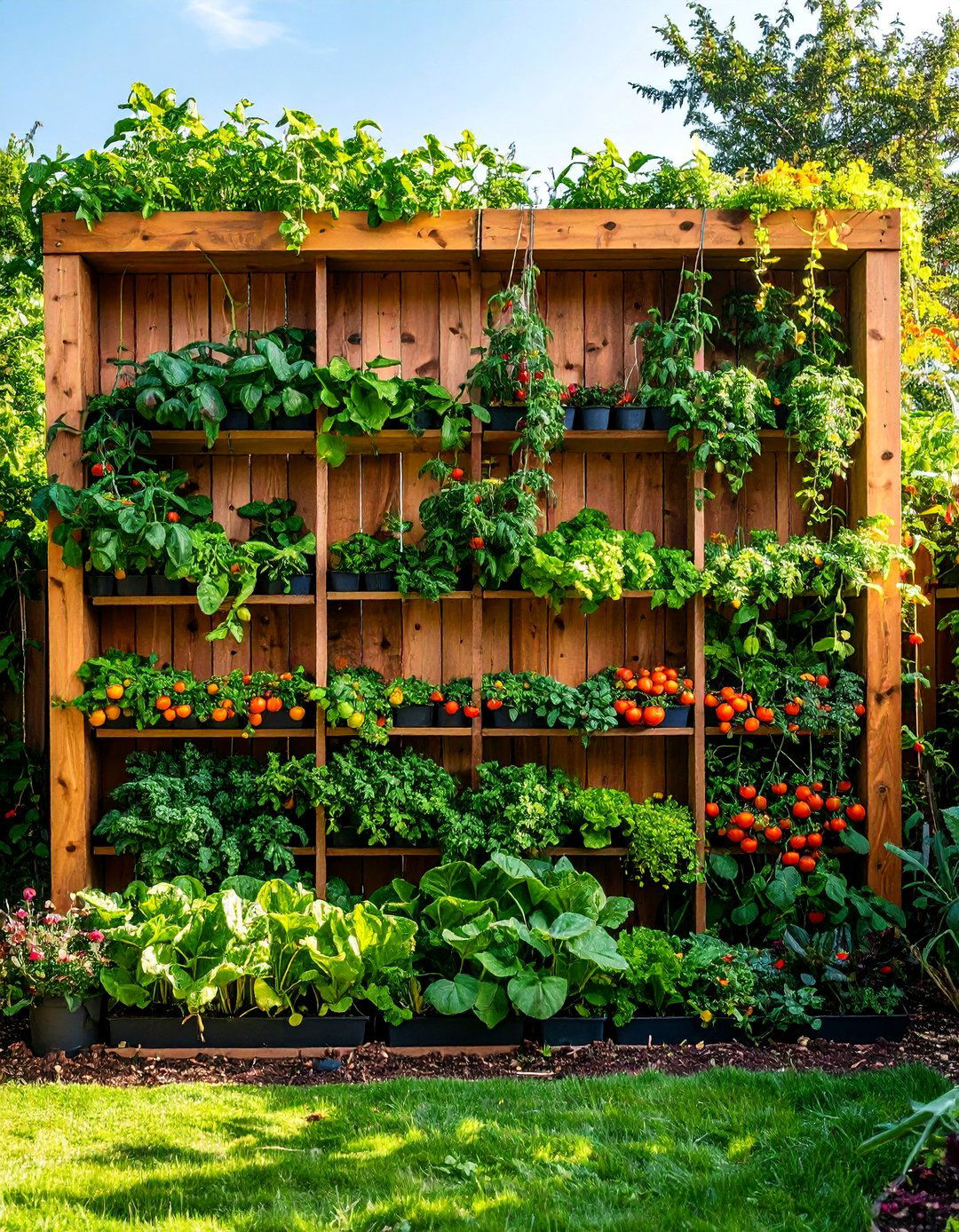





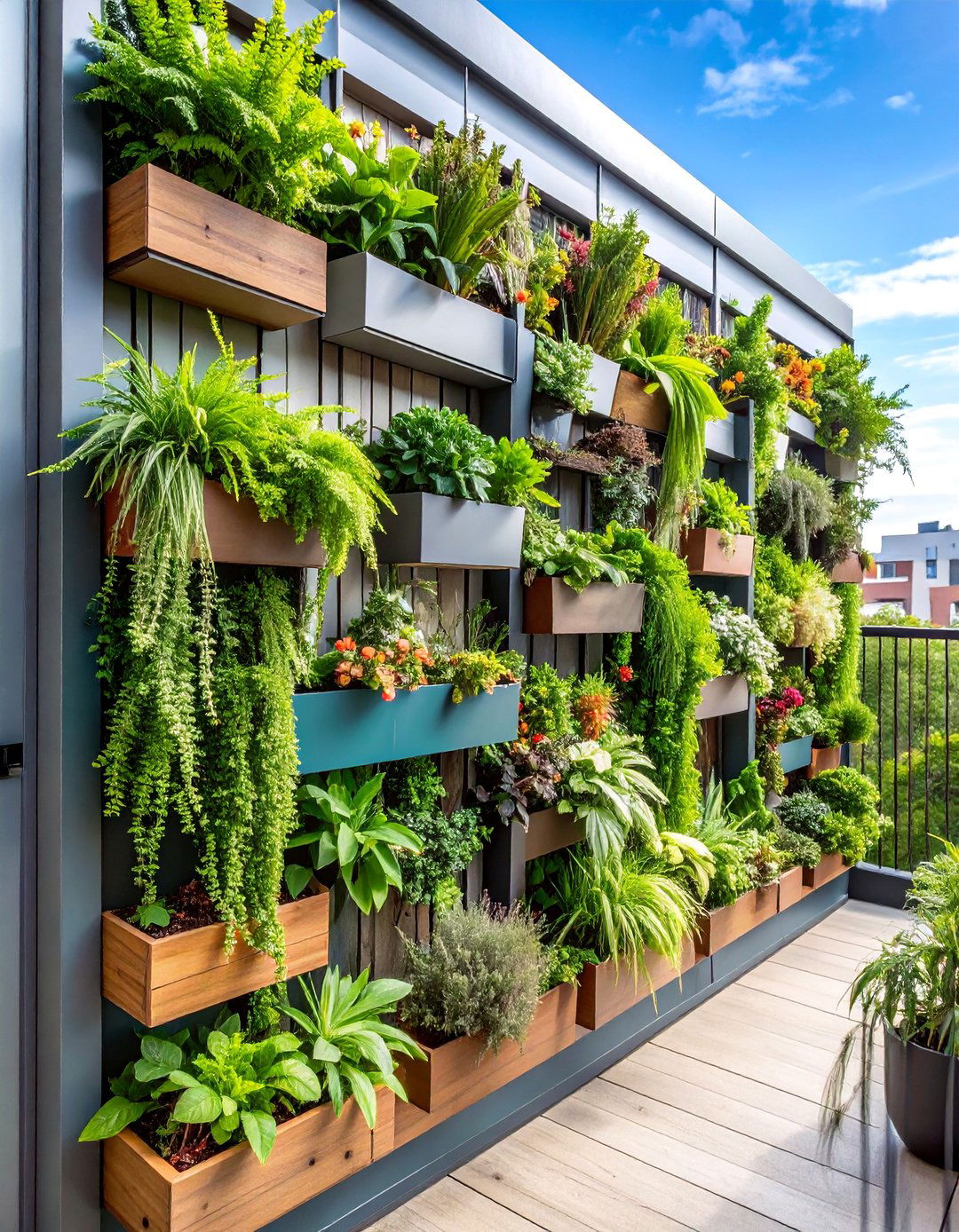




Leave a Reply